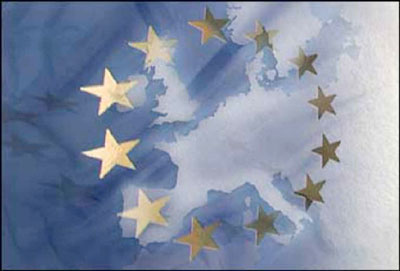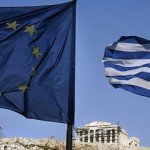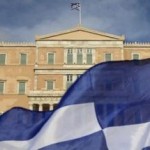Fast Facts about the Debt Crisis in European Countries

Here’s a look at the European Debt Crisis which has affected the countries of Cyprus, Greece, Ireland, Italy, Portugal and Spain.
Cyprus:
July 11, 2011 – A munitions explosion at a naval base kills 13 people and destroys the country’s main power station. The resulting blackouts severely impact the tourism and finance sectors of the economy.
December 23, 2011 – After a series of credit downgrades and exposure to the financial crisis in Greece, Cyprus signs an agreement with Russia for an emergency loan worth €2.5 billion to shore up its economy. Cyprus agrees to pay the loan back over 4.5 years with a 4.5% interest rate.
June 25, 2012 – The government of Cyprus announces that it will seek a bailout from the EU and the IMF to prop up its banks. According to the International Monetary Fund, banks in Cyprus have approximately €152 billion in outstanding loans or other money at risk, which is eight times the country’s gross domestic product.
January 21, 2013 – Eurozone finance minister tells the government of Cyprus that a bailout will be delayed over concerns that the bailout of €17 billion is too large. The amount is almost equivalent to the country’s annual gross domestic product.
February 24, 2013 – Conservative Nicos Anastasiades is elected president by a double-digit margin.
March 16, 2013 – Cyprus reaches an agreement on a bailout with eurozone finance ministers, the IMF and the European Central Bank. The terms include a one-time tax of 9.9% on bank deposits of more than €100,000. Smaller deposits would pay a tax of 6.75%. This “haircut” reduces the total amount of the EU bailout to approximately €10 billion. Cyprus also agrees to raise its corporate tax rate and ensure its banks aren’t havens for money laundering.
March 19, 2013 – Cyprus’ Parliament rejects the EU bailout, after protests from the public.
March 19, 2013 – The U.K. flies a plane with €1 million aboard to provide cash for 3,000 British soldiers stationed on Cyprus.
March 20, 2013 – Cyprus’ finance minister, Michael Sarris holds talks with top Russian officials.
March 20, 2013 – Cyprus’ cabinet holds emergency talks to work out a new deal with either Russia or the EU. The government orders banks that have been closed since March 16, to remain closed.
March 25, 2013 – Cyprus reaches a deal with the EU for a €10 billion bailout. The terms include: closure of the country’s second biggest bank, Popular Bank of Cyprus; an increase of tax rates on capital gains and businesses; privatization of state assets; and reduction of the size of the banking industry by 2018. Approximately 10,000 people may lose their jobs.
March 25, 2013 – Cyprus’ Ministry of Finance announces that banks will remain closed until March 28th, to guard against people rushing to withdraw their money.
March 28, 2013 – Banks reopen.
April 30, 2013 – The parliament votes to approve the EU bailout.
Greece:
January 1, 2001 – Greece drops its currency, the drachma, to join the European Union “eurozone.” Greece is the 12th country to adopt the currency. In order to meet the EU’s standards, Greece makes deep cuts in public spending.
2004 – Greece spends approximately $11 billion dollars (U.S.) on the Summer Olympics in Athens.
November 15, 2004 – Greece admits that it gave misleading information to gain admittance to the eurozone. One of the EU’s requirements for eurozone member countries is deficits below 3% of GDP. Greece has not met those criteria since 1999.
March 29, 2005 – The government hikes taxes on alcohol and tobacco to raise funds.
June 2005 – Unions call for strikes in response to Prime Minister Kostas Karamanlis’s plan to cut pensions and raise the retirement age.
January-March 2006 – Greece shows signs of improvement with 4% growth in the GDP.
October 4, 2009 – George Papandreou wins election as prime minister.
November 2009 – Greece’s national debt reaches €262 billion. Prime Minister Papandreou says that the 2009 budget deficit will be 12.7% of GDP, far above the EU limit of 3%.
December 14, 2009 – Prime Minister Papandreou announces plans to cut public sector employment, reduce military spending, and cut government spending in other areas.
December 17, 2009 – Thousands of union workers go on strike to protest cuts in government spending.
January 13, 2010 – The European Commission condemns Greece for giving false data on its finances and says the deficit and debt may be higher than the figures released in November 2009.
February 2, 2010 – Prime Minister Papandreou makes a televised address, appealing to Greek citizens to support austerity measures.
February 10, 2010 – Public workers in Greece strike in protest against new austerity measures.
February 11, 2010 – German Chancellor Angela Merkel says that she will oppose a bailout for Greece and says the country must tackle its debt problems itself.
March 3, 2010 – Protests break out across the country. The government announces plans to lower the deficit by cutting public employees’ salaries and raising taxes.
April 11, 2010 – EU finance ministers announce a €30 billion bailout package for Greece.
April 23, 2010 – Greece requests a €45 billion bailout from the EU and the International Monetary Fund.
May 2, 2010 – The IMF, the European Central Bank and the European Commission announce a three-year aid package, worth €110 billion, designed to rescue Greece.
May 2-5, 2010 – Workers declare a 48-hour strike to protest the bailout. Three people are killed after a bank is set on fire.
May 18, 2010 – Greece receives €14.5 billion loan from the EU to repay its immediate debt.
July 7, 2010 – Greece’s parliament passes pension reform, cuts benefits, curbs early retirement and raises women’s retirement age to 65 from 60. Men’s retirement age is already 65.
April 23, 2011 – The European Commission releases data showing that Greece’s budget deficit in 2009 was 13.6%, higher than the projected 12.7%.
May 11, 2011 – Clashes erupt between police and approximately 20,000 protesters in Athens.
June 4, 2011 – Protests break out in Athens after Prime Minister Papandreou announces large cuts in public-sector employment.
June 15, 2011 – Protesters hit the Greek Ministry of Finance with gasoline bombs.
June 19, 2011 – Prime Minister Papandreou announces that Greece will need a second bailout of €110 billion.
June 22, 2011 – Prime Minister Papandreou announces further austerity plans.
July 21, 2011 – European leaders agree to a second bailout package. European governments and the IMF will contribute a total of €109 billion. Private bond holders will be expected to contribute €37 billion.
September 14, 2011 – German Chancellor Angela Merkel and French President Nicolas Sarkozy issue a joint statement following a phone call with Papandreou. The leaders say that enacting a set of proposals the European Council announced in July to support Greece and prevent a broader crisis are now more important than ever to “ensure the stability of the eurozone.”
September 27, 2011 – Papandreou says that, “(he) can guarantee that Greece will live up to all its commitments” and, “I promise you we Greeks will soon fight our way back to growth and prosperity.”
October 2, 2011 – The Greek cabinet announces that it adopted a draft budget for 2012, but will miss key deficit targets. According to the preliminary budget, Greece’s budget deficit will be €18.69 billion, or 8.5% of GDP, in 2011. Greece originally agreed to a deficit of €17.1 billion, or 7.8% of GDP, with the International Monetary Fund, European Commission and the European Central Bank.
October 19-20, 2011 – Tens of thousands of people protest against new austerity measures being considered by Greece’s Parliament. At least one person is killed.
October 27, 2011 – European Union leaders announce an agreement on debt crisis measures, including a deal with private sector investors to write down Greek bonds by 50%, which translates to €100 billion and will reduce the nation’s debt load to 120% from 150%.
November 6, 2011 – Papandreou announces that he will resign from office on the condition that the €130 billion deal is approved.
November 11, 2011 – Lucas Papademos, a former professor, banker, and European Central Bank vice-president, is sworn-in as prime minister of Greece.
February 12 – 13, 2012 – Lawmakers in Greece vote to approve another round of austerity measures, sought in return for a new eurozone €130 billion ($172.6 billion) bailout deal..
As lawmakers debate, police turn tear gas and stun grenades on protesters outside Parliament, and twenty-five protesters and 40 officers are injured.
February 21, 2012 – Eurozone finance ministers approve a second bailout for Greece, including €130 billion ($173 billion) in new financing.
March 9, 2012 – Creditors agree to a plan to restructure Greek government bonds. The deal means Greece has cleared its final hurdle to qualify for the €130 billion bailout program from the European Union and International Monetary Fund.
May 15, 2012 – President Karolos Papoulias announces that the country will have to hold new elections, after no political party is able to form a coalition government nine days after the election.
June 17, 2012 – New elections are held.
June 20, 2012 – New Democracy leader Antonis Samaras is sworn in as Greece’s new prime minister.
June 21, 2012 – Greece swears in a new cabinet, putting an elected government in charge of the country for the first time in 224 days.
November 8, 2012 – The Greek parliament adopts a new round of austerity cuts. The final tally in the 300-member parliament was 153 votes in favor of the cuts and 128 opposed, with 18 abstentions.
November 11, 2012 – The Greek parliament approves the nation’s 2013 austerity budget that contains steep cuts required for Greece to receive the next installment of economic bailout funds. The final tally in the parliament was 167 votes in favor, 128 opposed, with four abstentions.
September 12, 2013 – Unemployment in Greece reaches 27.9%. Additionally, 58% of people under 25 are unemployed as well.
December 29, 2014 – Greece’s parliament is unable to secure enough votes to install a new president. Snap elections will be held in January.
January 25, 2015 – Alexis Tsipras and the left-wing Syriza party claim victory in Greek elections after running on a platform of anti-austerity.
February 20, 2015 – Europe agrees to four-month extension of the bailout.
April 9, 2015 – Greece announces it has scheduled a 460 million euros ($497 million) payment to the IMF, dismissing rumors the government might not have enough cash to pay on time.
June 4, 2015 – Greece postpones IMF payment that was due on May 31, 2015. The country now owes €1.54 billion ($1.7 billion) by June 30.
Ireland:
September 2008 – Ireland is the first eurozone country to fall into recession.
September 30, 2008 – During the international financial crisis, Ireland announces a bailout plan worth €400 to stabilize the country’s six main banks.
December 18, 2008 – Chairman of Anglo Irish Bank Sean Fitzpatrick resigns, admitting that he hid €80 million in secret loans from shareholders.
December 21, 2008 – The Irish government pumps €5.5 billion in three of the country’s largest banks.
January 15, 2009 – The Irish government is forced to nationalize Anglo Irish Bank to keep it from collapsing.
February 4, 2009 – Prime Minister Brian Cowen announces €2 billion in public spending cuts.
February 10, 2009 – Insurance company Irish Life & Permanent confirms that it made a loan to Anglo Irish of €7 billion in 2008.
February 11, 2009 – Ireland announces that it will prop up Bank of Ireland and Allied Irish Bank with 7 billion. The government takes a 25% indirect stake in the banks.
February 20, 2009 – A report is released showing that Anglo Irish Bank lent €451 million to 10 customers so they could buy shares in the bank. There are 15 customers who each owe the bank €500 million.
February 21, 2009 – Tens of thousands of protesters rally in Dublin.
May 29, 2009 – The government props up Anglo Irish bank with another €4 billion.
February 19, 2010 – The government takes a 16% direct stake in Bank of Ireland, when the bank can’t make a payment.
March 30, 2010 – Ireland props up Anglo Irish Bank with another €8.3 billion.
March 31, 2010 – Anglo Irish Bank reports a loss of €12.7 billion, the largest corporate loss in Irish history.
May 13, 2010 – The Irish government takes a 18% stake in Anglo Irish bank.
June 9, 2010 – The government’s stake in Bank of Ireland rises to 36%.
September 30, 2010 – The Central Bank of Ireland announces that the bailout of Anglo Irish bank could end up costing taxpayers €34 billion.
September 30, 2010 – Ireland’s deficit is revised to 32% of GDP, the largest deficit for a eurozone member since 1999.
September 30, 2010 – Ireland props up Irish Nationwide Bank with €2.7 billion.
October 26, 2010 – The Irish government announces it must make budget cuts of €15 billion in order to reduce the budget deficit to 3% of GDP by 2014.
November 21, 2010 – Prime Minister Cowen announces that Ireland has applied for aid from the EU and IMF.
November 24, 2010 – Ireland outlines €15 billion in spending cuts and tax increases. It refuses to raise its low tax on corporations. This plan is intended to reduce the budget deficit to 9.1% of GDP in 2011.
November 27, 2010 – Thousands rally in Dublin, protesting the bailout and budget cuts.
November 28, 2010 – Ireland accepts a €67.5 billion bailout package.
December 23, 2010 – The government injects another €3.7 billion into Anglo Irish bank, taking its stake to 93%.
March 31, 2011 – An examination of the books of Irish banks shows a €24 billion shortfall. The Central Bank of Ireland says that it expects that the government will take control of the country’s six largest banks.
June 1, 2012 – Ireland’s voters approve a European treaty that aims to enforce stricter fiscal discipline.
July 5, 2012 – Ireland completes its first bond sale since its bailout in 2010. The Irish government raises €500 million, or $626 million, by selling 3-month Treasury bills at a yield of 1.80%.
December 13, 2013 – Ireland exits the bailout program established by the EU and IMF in 2010, the first eurozone country to do so. Although Ireland is no longer reliant on the IMF and EU for funding, it will continue to pay off its emergency loans into the 2030s.
Italy:
May 25, 2010 – Italy approves a €24 billion austerity plan, designed to cut the deficit to 2.7% of GDP by 2012.
May 2011 – Italy’s debt is €1,900 billion, three times the debt of Greece, Portugal, and Ireland combined. That figure is 120% of GDP.
July 2011 – The IMF tells Italy to reduce its debt.
July 14, 2011 – Italy raises €3 billion from selling bonds, but is forced to pay record interest rates of 5.9%.
July 14, 2011 – The Italian Senate passes a budget with cuts of €48 billion over three years.
August 2, 2011 – The European Commission announces that no debt rescue plan is in the works for Italy.
August 5, 2011 – Prime Minister Silvio Berlusconi and Finance Minister Giulio Tremonti hold emergency talks, and agree to speed up the implementation of austerity measures.
August 12, 2011 – The European Securities and Markets Authority imposes a ban on short selling stock in Italy.
September 7, 2011 – The Italian Senate votes to approves an austerity package designed to bring down the country’s soaring budget deficit. The plan would increase the value added tax from 20% to 21% and bring in an additional €4.2 billion per year.
November 8, 2011 – The office of Italian President Giorgio Napolitano announces that Prime Minister Silvio Berlusconi will resign when the country’s budget is confirmed by the senate.
December 22, 2011 – Prime Minister Mario Monti’s $40 billion austerity package is approved by Italy’s Senate. Measures include selling state assets and raising the retirement age.
Portugal:
November 19, 2009 – Portugal forecasts that its deficit in 2009 will be 8% of GDP.
January 15, 2010 – The treasury issues a statement to reassure investors of the government’s commitment to deficit reduction.
January 20, 2010 – The government announces that it is freezing government wages and reducing the number of government workers through attrition.
January 26, 2010 – The government announces that the budget deficit is actually 9.4%.
March 8, 2010 – The government announces new austerity measures, including more privatization, caps on wages and tax increases. Tens of thousands of public workers strike.
May 13, 2010 – Portugal implements tax increases and salary reductions for public workers, including politicians.
March 8, 2010 – Portugal announces an austerity program.
May 12, 2010 – Portugal announces another round of austerity measures.
May 29, 2010 – Large demonstrations break out in Lisbon, to protest against austerity plans.
March 23, 2011 – Prime Minister Jose Socrates resigns. He continues in the position as a caretaker until June.
April 6, 2011 – Portugal requests a bailout from the European Union.
May 3, 2011 – Portugal agrees to a €78 billion bailout from the European Union and the IMF.
June 2011 – The conservative Social Democratic Party forms a coalition government with the Popular Party. Pedro Passos Coelho becomes the new prime minister.
May 4, 2014 – Portugal announces it is exiting the bailout program.
Spain:
January 2009 – Spain enters its first recession in 15 years.
January 29, 2010 – The government announces a plan to cut government spending and save €50 billion.
January 29, 2010 – Spain announces that its budget deficit in 2009 was 11.4% of GDP.
February 3, 2010 – Spain forecasts that its budget deficit in 2010 will be 9.8%.
February 5, 2010 – Large protests erupt when the government announces plans to raise the retirement age.
May 27, 2010 – The government wins approval of its €15 billion austerity plan. The plan includes cutting public employees’ wages and cutting welfare benefits.
June 8, 2010 – Spanish unions protest the austerity plan with a one-day strike.
September 2010 – Parliament passes a law that makes it easier for companies to fire workers.
September 2010 – General strike called by unions to oppose the spending cuts.
January 2011 – The government and unions reach an agreement over pension reform. The retirement age is raised from 65 to 67.
May 5, 2011 – Young people protest unemployment in Madrid, Barcelona and Valencia. The unemployment rate among young people has reached 50% in some areas.
June 2011 – The European Banking authority carries out “stress tests” on Spanish banks. Five fail the test and seven others barely pass.
August 12, 2011 – The European Securities and Markets Authority imposes a ban on short selling stock in Spain for 15 days.
November 20, 2011 – Spanish voters oust the Socialist Party in favor of the conservative Popular Party lead by Mariano Rajoy.
April 30, 2012 – The government announces the country has entered its second recession since 2009.
June 2012 – Spain asks the European Union for up to $125 billion to provide a capital buffer for the nation’s ailing banks.
January 23, 2014 – Spain exits the bailout program.
Source: CNN – European Debt Crisis Fast Facts





























